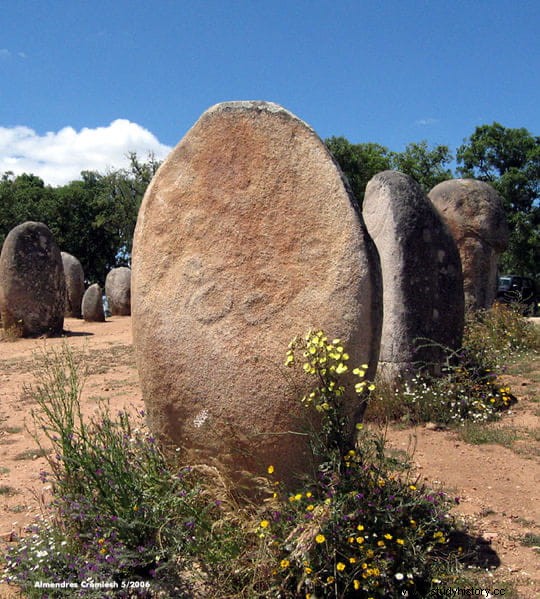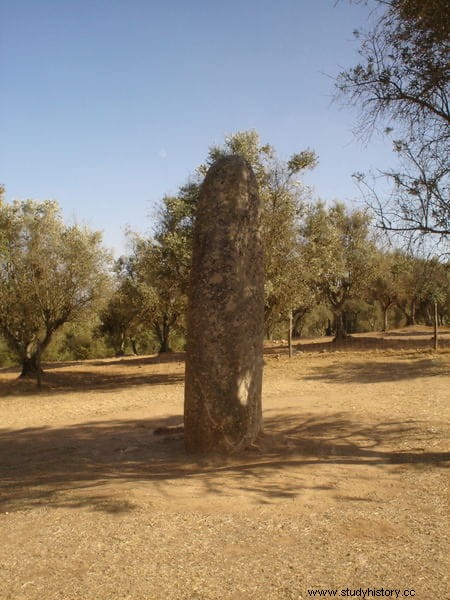The Portuguese Cromleque dos Almendres (Crómlech de los Almendros in Spanish, although it is not a literal translation but an exonym) is a prehistoric circle of stones, considered the largest and most important megalithic monument in the Iberian Peninsula.
Not only that, due to its size it is also one of the largest in Europe and one of the best preserved. It is located near the town of Guadalupe, in Évora. And in its vicinity there is a menhir of the same name, with which it forms an archaeological and monumental complex discovered in 1964.

Located on the top of a hill 413 meters high, it was found by Henrique Leonor Pina, while he was working on the geological map of Portugal, practically hidden by vegetation and with most of the fallen stones.
Restoration work and archaeological excavations began almost immediately, resulting in the discovery of ceramic pieces and a polished stone axe. Likewise, the stones, which add up to a total of 95, were re-erected in their original place.
In fact, the entire area of Évora is full of menhirs, dolmens, necropolises and prehistoric settlements, dating from the Neolithic to the Iron Age. Nearby is, for example, the Portela de Mogos cromlech, found two years later, smaller but with the peculiarity that the menhirs are arranged in the shape of a star and at least six of them have inscriptions.

Returning to the Crómlech de los Almendros , archaeologists believe that it was erected in three clearly differentiated periods. From the 6th millennium B.C. would date the three small concentric circles, the largest of which has a diameter of 18.80 meters.
During the 5th millennium B.C. a new alignment was erected to the west of those, this time formed by two concentric and irregular ellipses, the largest of them with 43.60 meters in diameter in its major axis. They are made up of 29 menhirs (which were found erect), plus 17 (which were found lying down) and another 10 missing, of which the supporting structures remain.

At the end of the Neolithic, in the III millennium B.C. Both enclosures were modified, turning the smaller one into a kind of entrance or atrium that gave way to the larger enclosure, where ceremonies or socio-religious rituals would be held, or it could have had a primitive astronomical function (some authors relate its latitude with the maximum elongation lunar, something that only happens, surprisingly, in another place:Stonehenge). The engravings found on some of the stones would also date from this period.
The stones that make up the set are small, ovoid in shape, the largest up to 3 meters high. Its composition is not uniform, which reveals different origins for the monoliths, which could have been extracted from quarries found within a radius of one kilometer.

Up to 10 of them have reliefs or engravings . The most outstanding are the one cataloged as menhir number 48, which presents an anthropomorphic figure with a kind of staff; number 56, considered as a menhir-statue, which shows a stylized human face, with a large nose, eyes and mouth; and number 58, with three representations of solar disks.
The solitary menhir, which is located about 1,300 meters northeast of the cromlech, is 4.5 meters high and almost one meter in diameter. Interestingly, the straight line that joins the chromech with it points directly to the sunrise during the winter solstice.
From the Chalcolithic (around 3300 BC) the complex ceased to be used and was abandoned at the same time that the metallurgical societies of the Copper Age began to emerge.
